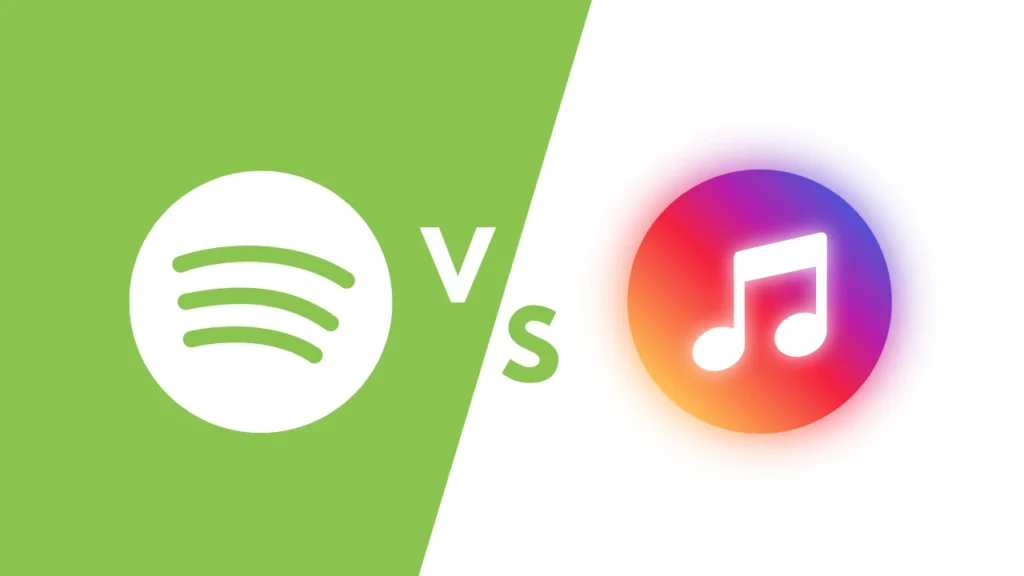
Choosing between Spotify and Apple Music can be challenging, especially when both platforms offer exceptional music streaming experiences. Each service has unique strengths and caters to different user preferences. Understanding the differences clearly can help determine which streaming giant suits you best.
Spotify hosts a vast library of over 100 million tracks, ranging from popular hits to obscure indie gems. Regardless of your musical taste, Spotify consistently updates its collection to meet listener demands. Spotify excels in user-generated playlists and viral hits, making it the ideal platform for trend followers and music explorers.
Apple Music similarly offers an extensive catalog, boasting over 100 million songs. The platform often secures exclusive album releases and artist collaborations not immediately available elsewhere. Exclusive live sessions, music documentaries, and special artist-curated playlists make Apple Music appealing to true music enthusiasts. For those craving exclusive content, Apple Music often holds the edge.
Audio quality matters significantly for dedicated music listeners. Spotify streams music at 320kbps, using Ogg Vorbis compression for its Premium users. This quality is good enough for everyday listeners, though audiophiles may notice subtle limitations. Spotify has promised Spotify HiFi, offering lossless streaming, but its launch remains pending.
Apple Music, however, already provides Lossless Audio streaming at no additional cost. Apple employs ALAC (Apple Lossless Audio Codec) for streaming at up to 24-bit/192kHz quality, offering exceptionally clear audio. Furthermore, Apple Music features Dolby Atmos-powered Spatial Audio. This technology delivers an immersive surround-sound experience, significantly enhancing the overall listening environment. Audiophiles who prioritize sound precision and immersive audio should seriously consider Apple Music.
Also Read : Robotic Engineer Career Path: Get Started
The user interface and overall design significantly impact the streaming experience. Spotify is known for its intuitive and easy-to-use design. Navigation is seamless, making discovering new music and managing playlists straightforward. Spotify’s dark-mode aesthetic is easy on the eyes during extended listening sessions. The app feels equally user-friendly on desktop, smartphone, tablet, and smart devices.
Apple Music adopts Apple’s signature sleek and minimalist interface. However, some users find the app slightly complex and less intuitive compared to Spotify. New users might experience a learning curve before fully navigating the platform smoothly. Apple Music seamlessly integrates within the Apple ecosystem, proving particularly effective for iPhone, MacBook, and Apple Watch users.
Spotify is renowned for its highly personalized music discovery features. The service creates algorithmically generated playlists such as Discover Weekly, Release Radar, and Daily Mixes, uniquely tailored to each user’s taste. Spotify Wrapped annually showcases personalized listening summaries, deepening the personal connection between user and service. Users who thrive on discovering new artists through algorithm-driven recommendations will likely prefer Spotify.
Apple Music combines algorithm-driven playlists with human-curated recommendations. Human curators regularly update playlists and create thematic content to reflect current trends and classic hits. Apple Music’s “For You” tab is personalized according to user listening habits and preferences. Users who prefer a hybrid of algorithmic suggestions and human expertise will appreciate Apple Music’s balanced approach.
Social features add significant value to music streaming platforms. Spotify excels in social integration, allowing users to share playlists effortlessly, follow friends, and see their live listening activity. Users can quickly collaborate on playlists, perfect for parties or group activities. Spotify Connect further enhances convenience by smoothly streaming music across multiple devices without interruption.
Apple Music, while supporting basic social sharing options, is relatively limited in this aspect compared to Spotify. Users can share playlists, songs, and albums through messages or social media. However, real-time music sharing or tracking friends’ listening activity is minimal. Those who prefer a highly social music experience might find Spotify more suitable.
Spotify is highly versatile regarding compatibility and device integration. Users can effortlessly stream music on Android, iOS, Windows, macOS, gaming consoles, smart speakers, car infotainment systems, and smart TVs. Spotify’s seamless integration across platforms and devices is unrivaled, making it exceptionally convenient for listeners using multiple device ecosystems.
Apple Music naturally thrives within the Apple ecosystem. Integration with Apple devices, including iPhones, iPads, MacBooks, Apple Watches, and HomePods, is flawless. However, Apple Music has gradually expanded compatibility, providing apps for Android devices and web browsers. Nevertheless, Spotify’s universal compatibility still holds an advantage for users outside the Apple device ecosystem.
Pricing is another critical consideration when comparing Spotify and Apple Music. Spotify offers a free, ad-supported tier, perfect for casual listeners or those on a tight budget. Premium subscriptions start at approximately $10 monthly, eliminating ads, enabling offline listening, and offering better audio quality. Spotify also provides affordable student and family plans, enhancing cost-effectiveness.
Apple Music lacks a free tier but provides a generous three-month free trial period for new subscribers. Subscription pricing for Apple Music also starts around $10 monthly, similar to Spotify’s premium tier. Apple Music offers discounted family and student plans, paralleling Spotify’s pricing structure. Ultimately, pricing differences between the two services remain minimal, with choices hinging primarily on preferred content and user experience.
Also Read : Understanding Font Duo: Meaning and History
Spotify is ideal for listeners prioritizing music discovery, algorithmically personalized playlists, strong social integration, and universal device compatibility. Casual listeners, trend followers, and users who frequently switch devices benefit most from Spotify’s strengths.
Apple Music is particularly suitable for audiophiles, Apple ecosystem enthusiasts, and users desiring exclusive content and high-quality lossless audio streaming. Users invested in Apple’s environment gain the most convenience and seamlessness from Apple Music.
Both Spotify and Apple Music offer exceptional services, and choosing between them ultimately depends on personal preferences, lifestyle needs, device ecosystems, and audio quality expectations. By understanding these nuanced differences, you can confidently select the best streaming service tailored perfectly to your listening habits and preferences.